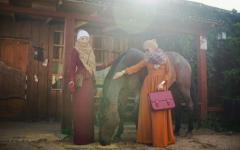Jewelery » Product defects and their elimination
Product defects and their elimination
Quality finished products at the enterprises of the jewelry industry, technical control departments (OTC) check. Products that cannot be corrected are sent for remelting, and products that can be corrected are returned to the master performer. The jeweler determines the cause of the defect and finds the best option to eliminate it. Types of marriage after mounting jewelry: discrepancy to the specified size, pores and non-solders in the places of soldered joints, violation of the symmetry of the product during assembly, discrepancy between the color of the solder to this product, mismatch of paired products (earrings), insufficient density of one-piece movable joints, backlash (bumpiness) during operation fastening devices, insufficient cleanliness of product processing.
Defects found after setting the stones: the stone is crooked, the prongs are unevenly processed, the grisant notch is not clearly applied, the pruning around the stone is not clean, the stone is unevenly pressed, the stone wobbles in the caste, the faden-grisant cutting is not performed cleanly, the stones are chipped along the girdle, on corners, ribs.
The discrepancy between the product and the specified size applies mainly to the rings, the reason for this may be incorrect calculation of the workpiece for the shank, violation of the length of the workpiece when fitting the shank. To correct the defect, change the size of the ring up or down. By reducing the size of the rings of variable cross section or with a caste, top, soldered elements, a section is cut out from the middle of the shank that makes up the difference. The cut out section should include a reveal so as not to form another soldering point. Reducing the size wedding rings, the pre-annealed ring is subjected to double-sided compression in a punch or anch. You can increase the ring to one size by drawing the shank (chopping on the crossbar). Rings of the same section are enlarged on a special lever device - an expanding crossbar. To increase the rings by 1.5 mm or more, solder the insert right size from metal of the same sample and color.
The main reason for the appearance of pores in the places of soldered joints is a loose fitting of parts or, which happens less often, a mismatch of the solder to a given alloy. To eliminate porosity, the joints of the parts are cut and, after a tight fit, soldered again, checking the suitability (compliance) of the solder. If it is impossible to connect the dissected sections with a jointer, inserts are inserted into the gap. Non-solders are obtained when, as a result of contamination or oxidation of the area prepared for soldering, the solder does not completely fill it. There are many reasons for non-solders: the flux is dirty or incorrectly prepared, the soldering place and solder are not sufficiently fluxed, the product overheated during soldering, or the parts were loosely fitted. The defect can be eliminated by resoldering after appropriate preparation of the product. The product must be heated with flux and thoroughly bleached (it is better to re-do the flux for this). A well-fluxed product is re-soldered in compliance with the temperature regime.
A violation of the symmetry of the product should be considered mixing in the process of assembling adjacent parts, as well as the curvature of parts. Examples are: rings with a caste displaced relative to the shank, a shank displaced relative to the central axis of the ring; a ring inside which the shank does not form a regular circle together with the caste (the ring is not made according to the crossbar); rings, the linings of which are at different levels or horizontally displaced; rings with a shank curved to the side; earrings that have a hinged or locking hook offset relative to the caste, as well as earrings that are offset from other adjacent parts; brooches with broken parallelism of the base and the clasp needle; pendants, in which the suspension eye does not have a common axis with the suspension, and other types of displacement of parts relative to each other.

The shift of the cast can be caused by unevenly made notches on the cast, uneven sawn ends of the shank, displacement of the shank during heating during soldering. In most cases, the defect is corrected by soldering one of the ends of the bar. To do this, the end of the shank is cut off from the cast and, after aligning the cast along the axes of symmetry, they are soldered again. The shank can move relative to the axis (central) of the ring if: the ends of the shank are soldered to the cast at different levels; when filing the ring from the inside, the cast turned out to be sawn unevenly; the cold-worked shank was taken to the side during heating during soldering. To correct a slight displacement of the castes from the inside, the rings are filed, aligned with the crossbar, and the ring is corrected in the annealed state. With a large displacement, one of the ends of the shank is cut off from the cast and re-soldered at the appropriate level. In rings with tops, the entire bar is dismantled (disconnected) and, having filled the former place of soldering and having fitted the bar, they are soldered again.
The displacement of the cast for rings made not according to the crossbar occurs for two reasons: the cast from the inside of the ring is selected (sawed) with a different radius than the circumference of the shank, and the ring is poorly adjusted on the crossbar. This defect is determined by the crossbar: the cast, selected with a smaller radius, will form a gap between the crossbar and the cast, in the middle of the cast. The cast, selected with a large radius, will fit snugly to the crossbar in the middle, but its edges and the ends of the shank may not reach the crossbar. These defects are eliminated by filing the ring from the inside and subsequent editing on the crossbar. The lining of the rings are at different levels as a result of their incorrect fitting or inaccurate soldering. In order for the ring to take on a normal appearance, one of the overlays is soldered to the level of the other.
The quality of finished products at the enterprises of the jewelry industry is checked by technical control departments (QCD). Products that cannot be corrected are sent for remelting, and products that can be corrected are returned to the master performer. The jeweler determines the cause of the defect and finds the best option to eliminate it.
Types of marriage after mounting jewelry - mismatch with the specified size, pores and non-solders in the places of soldered joints, violation of the symmetry of the product during assembly, mismatch of the color of the solder to this product, mismatch of paired products (earrings), insufficient density of one-piece movable joints, backlash (bumpiness) during operation fastening devices, insufficient cleanliness of product processing.
Defects found after setting the stones: the stone is crooked, the prongs are unevenly processed, the grisant notch is not clearly applied, the pruning around the stone is not clean, the stone is unevenly pressed, the stone wobbles in the caste, the fadan-grizant cutting is not performed cleanly, the stones are chipped along the girdle at the corners , on the ribs.
The discrepancy to the given size applies mainly to rings. The reason for this may be incorrect calculation of the workpiece for the shank, violation of the length of the workpiece when fitting the shank. To correct the defect, change the size of the ring up or down. By reducing the size of rings of variable cross section or with a custom, top, soldered elements, a section is cut out from the middle of the shank. The cut out section should include a reveal so as not to form another soldering point.
Reducing the size of wedding rings, the previously annealed ring is subjected to bilateral compression in a pro-pin or ankh. You can increase the ring to one size by drawing the shank (chopping on the crossbar). Rings of the same section are enlarged on a special lever device - an expanding crossbar. To increase the rings by 1.5 mm or more, solder an insert of the desired size from metal of the same sample and color.
The main reason for the appearance of pores in the places of soldered joints is a loose fitting of parts or, which happens less often, a mismatch of the solder with a given alloy. To eliminate porosity, the joints of the parts are cut and, after a tight fit, they are soldered again, checking the suitability (compliance) of the solder. If it is impossible to connect the dissected sections with a jointer, inserts are inserted into the gap.
Non-solders are obtained when, as a result of contamination or oxidation of the area prepared for soldering, the solder does not completely fill it. There are many reasons for non-solders: flux is dirty or improperly prepared; The place to be soldered and the solder are not sufficiently fluxed, overheated during the soldering of the product, or parts are loosely fitted. The defect can be eliminated by resoldering after appropriate preparation of the product. The product must be heated with flux and thoroughly bleached (it is better to re-do the flux for this). A well-fluxed product is re-soldered in compliance with the temperature regime.
A violation of the symmetry of the product should be considered a displacement in the assembly process of adjacent parts, as well as the curvature of parts. Examples are: rings with a custom shifted relative to the shank, a shank shifted relative to the central axis of the ring; a ring inside which the shank does not form a regular circle together with the custom (the ring is not made according to the crossbar);
Rings, the linings of which are at different levels or horizontally displaced; rings with a shin-koy bent to the side; earrings with a hinged or locking hook offset relative to other adjacent parts; brooches with broken parallelism of the base and the clasp needle; pendants in which the hanging eye does not have a common axis with the pendant.
The shift of the cast can be caused by unevenly made notches on the cast, uneven sawn ends of the shank, displacement of the shank during heating during soldering. In most cases, the defect is corrected by soldering one of the ends of the bar. To do this, the end of the shank is cut off from the cast and, after aligning the cast along the axes of symmetry, they are soldered again.
The shank can move relative to the axis (central) of the ring if: the ends
Shinki are soldered to the cast at different levels; when filing the ring from the inside, the cast turned out to be sawn unevenly; the cold-worked shank was taken to the side during heating during soldering. To correct a slight displacement of the castes from the inside, the rings are filed, aligned with the crossbar, and the ring is corrected in the annealed state. With a large displacement, one of the ends of the shank is cut off from the cast and re-soldered at the appropriate level. In rings with tops, the entire bar is dismantled (disconnected) and, having filled the former place of soldering and having fitted the bar, they are soldered again.
The displacement of the cast for rings made not according to the crossbar occurs for two reasons: the cast from the inside of the ring is selected (sawed) with a different radius than the circumference of the shank, and the ring is poorly corrected on the crossbar. This defect is determined by the crossbar: a cast selected with a smaller radius will form a gap between the crossbar and the cast, in the middle of the cast. The cast, selected with a large radius, will fit snugly to the crossbar in the middle, but its edges and the ends of the shank may not reach the crossbar. These defects are eliminated by filing the ring from the inside and subsequent editing on the crossbar.
The lining of the rings are at different levels as a result of their incorrect fitting or inaccurate soldering. In order for the ring to take on a normal appearance, one of the overlays is soldered to the level of the other.
The curvature of the bar can occur due to improper heating during soldering and one-sided straightening of the ring on the crossbar. In the first case, the tavern with custom is completely disassembled, and then assembled again. In the second case, it is enough to straighten the ring on the crossbar from the side to which the shank is tilted.
Displacement of hooks of earrings and earring relative to casts may be the result of incorrect determination of the place of soldering of the hook or earring or incorrect installation of the product during soldering. Slight displacement of the hook can be eliminated by mechanically changing its direction. With strong displacements, the displaced part (in a heated state) is removed and soldered again.
Mismatch of earrings can be caused by erroneous pairing of two earrings in the manufacture of several pairs, as well as errors in the transfer of dimensions in the process of manufacturing earring parts. The mismatch of a rejected pair is corrected for one earring, the dimensions and shapes of which are brought into full compliance with the other. The mismatch of earrings can also be expressed in other ways, for example, in the difference in the height or length of the lock hooks, the length of the ear hooks or hanging hooks, in the shape of the bend of the hanging hooks, in the corners of the bend of the lock hooks or ear hooks, etc. Depending on the nature of the defect, methods are also found its elimination. So, the shape and bending angles of the hooks, the length of the fasteners and hooks are adjusted mechanically - bending, filing or cutting accordingly. In some cases, the earring is subjected to partial disassembly and, after correcting the inappropriate part, is reassembled.
Insufficient density of one-piece movable joints is explained by incorrect fitting of parts of the movable joint. In most cases, the entire assembly is remanufactured to eliminate joint gaps.
The reasons for the backlash during the operation of fastening devices are different. Backlash in earrings can be caused by insufficient elasticity of the lock hook, discrepancy between the section of the pin and the diameter of the hole in the pin connection of the fastener, displacement of the fastener during assembly, and the wrong choice of the support angle of the post. In brooches - looseness of the swivel of the needle, insufficient fitting of the needle stop or lock parts to each other. The defect is eliminated by establishing its cause. With insufficient elasticity of the lock hook, the angle of its bend is reduced; if the cross section of the pin does not correspond to the diameter of the hole of the pin connection, the pin is replaced; when the shvenzy is displaced during assembly, it is soldered; with the wrong choice of the reference angle of the rack, it is replaced; if the swivel joint of the fastening needle is loose, the brooches remake the hinge; if the stop is not properly adjusted, it is lengthened if the parts of the lock are not tightly fitted - the lock is pressed in or one of the parts is replaced.
The parallelism of the needle with the base of the brooch is broken if the stop of the swivel of the needle and the different level of the swivel of the needle and the lock of the brooch relative to the base of the brooch are insufficiently adjusted. To eliminate the marriage, in the first case, they check the correct fit of the stop and, if necessary, file it, in the second, one of the nodes is completely disassembled and the height level is adjusted differently, checking it with a needle.
The reason for the discrepancy between the axes of the suspension eye and the suspension of the pendant is in the wrong place for the connecting eye. To correct the defect, they find a place for the connecting ear in the center of gravity of the suspension and put a newly made eye there.
The discrepancy between the color of the solder and the color of the product applies mainly to gold products. A defect is considered when the color of the solder joint. stand out from the product. The reasons for this defect can be: the wrong choice of solder by color, a large gap (loose fit) during soldering, or the spreading of solder over the surface of the product. In any case, the connection prepared for soldering must be tight, then a slight difference in the shades of the metal after soldering will not be noticeable. To correct the defect in the first two cases, the soldered area is cut out and, after a tight fit, soldered again with solder of the appropriate color and melting temperature. In the case of solder spreading over the surface, a "green" is formed, which is removed by filing this area.
Insufficient cleanliness of the processing of products is manifested in poor dressing of solder in places of soldering, waviness and staggering, in traces of scratches left by the scraper. The reason for imperfections in all cases is the inattention of the master when processing the product and poor filling of the scraper. Refinement of the product is considered to be additional filling of its well-prepared tool.
Defects made in the process of setting stones sometimes entail more serious corrections than during mounting. In addition, fixing a stone is always associated with the risk of pricking it. The cause of a crookedly fixed stone may be an unevenly selected (cut) nest or uneven compression of the stone. When correcting the curvature of a stone planted in a prong cast, it is enough to bend the prongs that prevent the stone from standing straight, and, turning the stone, evenly squeeze it with prongs. Stones fixed in blind castes must be completely cut out, for which the setting belt is slightly cut at the place of compression and its walls are bent with a special pressure tool. The whole operation must be done with the utmost care so as not to damage the cast. After the appropriate amendments, the stone is again crimped with the walls of the cast and processed.
The result of unequally processed prongs in products with a fixed stone is different length or the impression of different prong widths. The reason for this is the inattention of the master during the processing of the product. To eliminate the defect, longer prongs are filed with a file or cut with a chisel. The side trimming of the prong gives the impression of a reduction in its width. The general impression of the width of the prongs also depends on the stability of the cutting angle of all prongs.
An insufficiently clear grisant notch can be due to many reasons, in particular, due to an incorrectly cut edge for applying a grisant, an incorrectly selected number of a corner or knurling for a cut edge and a stone size, the use of a used tool (corner, knurling), etc. notches, the old grisant is cut off, leaving the necessary edge. To the trimmed rib, the number of the corner (or knurling) corresponding to the size of the stone is selected and the grisant is applied to it again.
An unclean cut around the stone is the result of poor dressing or an incorrectly selected engraver for this operation. When performing a second fine cut Special attention give dressing engraver. Its profile is chosen in accordance with the size of the stone, the angle and area of cutting.
Uneven compression of the stone by the walls of the cast can occur with disproportionately thick walls of the cast and an unevenly carved nest for the stone. The compression is leveled in different ways: with thick walls of the cast, the fixing belt is filed with a needle file, with walls of normal thickness, the cast is leveled with a pressure gauge, and in acceptable cases with a setting hammer, and only if none of the options gives the desired results, the stone is re-fastened.
The rocking of the stone in the caste is explained by its loose compression by the walls of the caste or prongs, the discrepancy between the carved nest and the size of the stone, and the discrepancy between the caste and the size of the stone (there are more castes). In each case, the elimination of defects proceeds in its own way. In case of loose compression, the stone is pressed again, in two other cases, the stone is fixed from the cast. If the nest is larger than the stone and the height of the cast allows the stone to be planted deeper, then a new nest is chosen, slightly lower than the previous one. If the height of the cast does not allow the stone to be planted deeper, or if the cast does not match the size of the stone, the cast is reduced to the desired size, and then the stone is fixed again.
Insufficiently cleanly executed fadan-grisant cutting is expressed in an impure (dull) cut fadan, poorly processed corners, and fuzzy grisant. The reason for these defects is poor preparation of the tool (filling of engravers) or an incorrectly selected tool for the operation. When correcting these defects, all selected engravers should be well filled and used strictly for their intended purpose. Corner rolls choose the numbers corresponding to the corner, first they are convinced of their suitability. Corners are chosen in the same way. Correction occurs in the same sequence as in the original cutting process.
Chips of stones mean only those that are allowed in the process of setting the stones. Along with others, the cause of chips and scratches on the stone may be ignorance of the characteristics of this stone. Chips along the girdle of a stone in most cases occur in stones with a thin girdle. The reasons for this defect can be: an excessively thick wall of the cast, an unevenly cut socket, uneven compression. Chipped corners are more common in rectangular stones and other shapes with sharp corners. The reason for the chipping may be a badly set stone, non-observance of compression of angular stones, uneven compression of the stone. Chips on the edges of the stone are formed, as a rule, because in the process of compressing the stone with a crusher or in the process of processing prongs or the fastening belt of a fixed cast, the edges of the stone are touched by a needle file. Correction of such defects in all cases is associated with fixing the stones and replacing them with new ones.
test questions
1. By what criteria are they classified jewelry?
2. What types of castes exist and how do they differ from each other?
3. How is the length of the workpiece for a round cast calculated?
4. What affects cast height?
5. What are the ways to make tops and which one is the most labor intensive?
6. What are the main parts of the ring?
7. What is the formula for calculating the size of a shank for a custom ring?
8. What role do wax models play when casting a product?
9. What properties should jewelry casting alloys have?
10. In what ways is a set of filigree produced?
11. What are the requirements for filigree solder and how is it prepared for soldering?
12. How is the depth of planting a stone in castes determined?
13. Name the main types of ring defects.
In the comments to the previous article, I was asked to make a report from the production. It turned out the following:
The history of jewelry begins with the appearance of a sketch in pencil, conveying the artist's idea. For a detailed study and creation of a technical drawing, important for the subsequent stages of production, the sketch is transferred to a computer and, using a tablet and a pen, is brought to perfection.
The technical drawing created by the artists falls into the hands of 3D designers, who show considerable creativity by creating a three-dimensional model of the decoration in a specialized computer program. Computer modelers work closely with the artists to fully convey their intent.

A computer file developed by 3D designers is transferred for product prototyping. Future jewelry"grown" on a special 3D printer from a polymer or wax. The model created on the equipment is finalized by the fashion designer for subsequent casting.


Regardless of what metal the jewelry was conceived of, it first appears in silver. Many prototypes of various products are put on wax rods and cast in silver. This sample, after the final refinement by the fashion designer, becomes the master model - the prototype of the future circulation of jewelry.



The master model is used by jewelers to obtain a mold. The prototype is immersed in a special plastic mass, molded and sent to the furnace, where high temperature plasticine-like mass hardens to the state of rubber. The mold is carefully cut and the master model is removed.

Lost-wax modellers tightly clamp the mold into which melted wax is injected under pressure, instantly hardening. Prototypes of future decorations are put on a wax rod, getting a blank for casting resembling a Christmas tree.




A wax tree is placed in a special casting device - a flask. It is filled with molding mass and sent to the oven for several hours, where the gypsum hardens and the wax models are melted. The flask is removed, allowed to cool, then filled with prepared jewelry alloy. After casting, the solid mold mass is washed off, and a golden tree appears, the products from which are cut off and sent for further processing.



Freshly cast products are matte and devoid of shine. Future jewelry is lowered into special moving drums, where the products are polished in a special mass consisting of small particles. On polishing, the decoration acquires a shine worthy of a noble metal.



Complex pieces of jewelry are sent to the mount site. On it, for example, the decorative part and the lock at the earrings are connected, rings are put on to put the pendant on the chain, complex bracelets are assembled and many other operations are performed. The strength of the assembly is mandatory checked by quality control.


bartack jewelry stones— one of the most time-consuming and responsible stages of jewelry production. Experienced specialists work under a microscope, carefully placing inserts - from cubic zirkonia to diamonds - into special platforms and fixing them. At this stage, professionals with many years of experience work, guaranteeing the strength and reliability of fastening.


To give a bright noble shine, white metal jewelry is coated with rhodium - a platinum group metal more valuable than gold itself. Products are lowered into a galvanic bath, where, as a result of a chemical reaction, they are covered with an even layer of metal. On products made of red gold, rhodium is applied with a special pencil, as a rule, in the places where the inserts are attached.






This is the cycle that jewelry goes through (I don’t write about OTC) before it hits the shelves.
It is planned to crash into the main water pipe. What is the best way to make a well for valve maintenance?
If the main pipe has already been laid. It would be best to dig a hole at the tie-in 50-60 cm lower than the bottom of the main pipe. Pour a concrete base as the bottom of the well, 10-12 cm thick. Lay around the circumference a brickwork of ceramic red bricks with an inner diameter equal to the inner diameter of the planned well to a height of about 10-15 cm above the surface of the main pipe. In the place where the main pipe enters and exits, install sleeves from a metal or plastic pipe of such a diameter that it is possible to fill mounting foam the space between the outer walls of the pipe and the inner walls of the sleeve. Rings and other products will be installed on the already erected and plastered brickwork. Next, you will make a hole at the desired point and size in the wall of the ring and run the embedded pipe through this hole.
Whether to put rings on solution?
If you are making a septic tank, and do not put the bottom on the base, there is no point in sealing all the seams! The only thing you need to put on the solution is the top cover, the neck (KS7-1.5) and the hatch so that your septic tank is not filled, in addition to domestic wastewater, also with storm water.
If you put the bottom on the base and / or you do not have a septic tank, but a water well, then we recommend that you do the following:
- install all rings without mortar, except for the top cover, neck and hatch;
- place the top cover and necks on the solution;
- after installing all the products, go down into your well and close all the cracks with the remaining solution;
- at the end of all work, you can still smear the inner surfaces of the walls of the well with liquid glass. Prepare a solution (cement, liquid glass, sifted fine sand in a ratio of 1: 1: 1) and re-putty the well.
Why are the rings attached to each other?
Usually the rings are fastened in cases where the pit turned out to be very large. Well, for example, because the pit was dug with a large excavator or instead of soil there was sand that constantly crumbled, respectively, the pit has big sizes by diameter.
In order to ensure that during backfilling, again in a mechanized way, the rings are not accidentally displaced relative to each other by the mass of the soil being filled up, they are fastened together. There are many ways to fasten. Our rings have mounting holes, if they (the holes) are placed strictly one above the other, it will be possible to twist the rings with a wire rod.
Or prepare metal plates with holes and fix them in 3-4 places at each joint of the rings. You can see this process at this link.
If the pit was dug by hand, that is, after installing the well, sinuses no more than 30 cm wide remain around it, there is no need to fasten the rings with each other. You will simply fill the sinuses evenly with soil around the circumference of the well and will not move the rings relative to each other. It is absolutely pointless to fasten the rings in all cases.
Why do you need to paint the rings with a primer?
According to science, any concrete product installed in the ground must have a protective primed surface. These primers (bituminous primers and mastics) protect the concrete from groundwater attack. After all, the structure of concrete has small pores, into which, in the absence of a protective surface of the concrete product, water enters. The autumn-spring period has a particularly negative effect on reinforced concrete products, when during the day the positive temperature on the street changes to negative repeatedly. Concrete grades are even divided into classes according to “frost resistance”. Therefore, in order to extend the service life of concrete products, it is desirable to prime them, and for 2 times. We provide such a service to our customers as priming the surface of reinforced concrete products, and deliver the products to the site already processed.
Do I need to put the bottom on the bottom of the septic tank?
When installing septic tanks according to sanitary, environmental and epidemiological requirements, it is required to install a bottom on the bottom of the well, and seal the seams between the products with a solution, thereby ensuring the tightness of the septic tank as a whole. Thus, runoff does not enter the groundwater. In most cases, when installing septic tanks, the bottom is not installed. The goal is to save on the cost of the bottom and, in the future, on pumping out the cesspool. Yes, indeed, the drains will go into the ground, therefore, they will have to be pumped out much less often. There are, only a few “significant BUT”. First, it is a violation of environmental regulations. Secondly, it is up to you to live on this earth, in the future, saturated with “impurities”. Thirdly, in the case of acceptance into operation of a septic tank, environmentalists check the presence of a solid foundation at its bottom. Fourth, when constructing a well in your area, there is a very high probability of poor water quality. However, with deep groundwater (deeper than 20 meters) and high soil density (clay), installing a septic tank without a bottom will not lead to anything catastrophic. IMHO
How to make out concrete rings septic tank on the site (inside the yard)?
Indeed, there are cases when it is necessary to make a sewer septic tank inside the site where unloading with a crane is not possible. In such cases, the septic tank is made of rings of small diameter (up to 1 meter). The rings are rolled and installed in the pit by digging. Another option is to make a septic tank from small rings, for example KS7-3, whose weight is not more than 120 kg. They can be manually lowered into the finished pit.
How to choose the volume of a septic tank?
The volume of the septic tank (working) is calculated based on the amount of water consumed by the inhabitants of the house. On average, a person consumes about 200 liters of water per day. Multiplying this figure by the number of residents, and multiplying by another 5, we get the volume required for a septic tank. For example, for a family of three, you will need a septic tank with a volume of 3 m³. Although, of course, soil plays an important role, sandy soil absorbs water well, and clay soil, respectively, poorly. Therefore, if your soil is “hard clay”, then it would be better to make a septic tank one and a half times more calculations.









